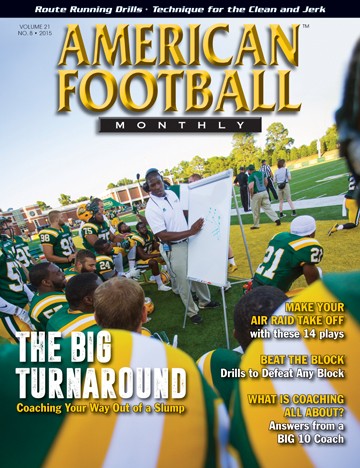Air Raid Concepts with Backside Tags
by: Nick Coleman • Offensive Coordinator • Itawamba Community College©
More from this issue
Offensive football in today’s college world has evolved over the past 20 years. More programs are running an up-tempo, spread style offense and defensive coaches have the argument of the 10 second rule. One of the most popular spread offenses is the “Air Raid” offense and its light it up passing attack. These concepts have been putting up record breaking numbers at every level of college football from FBS, FCS, Division II, Division III, and NAIA for over 20 years. Although there are many different versions of the Air Raid in college football today, a lot of the same base concepts are prevalent throughout each program. The most successful version we ran at NAIA Faulkner University was taking basic Air Raid passing concepts and adding backside tags.
The reasoning behind adding backside tags to these concepts is to give the QB an option based off coverage. Instead of running mirrored concepts, we place tags on the backside of basic Air Raid concepts. Every tag and concept has basic rules that puts the QB in the correct spot to throw the football.
The first backside concept is the “Snag” concept (Diagram 1)
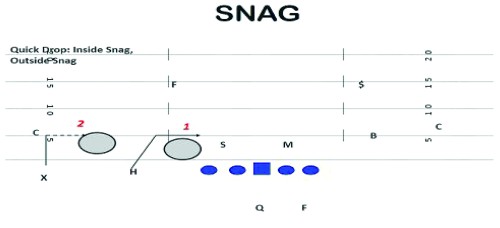
Most Air Raid offenses run backside slants opposite of the base concept. We would tag the “Snag” concept to give the QB a better option against two-high safeties.
Here is the “Scat” concept with the “Snag” routes tagged on the backside (Diagram 2).
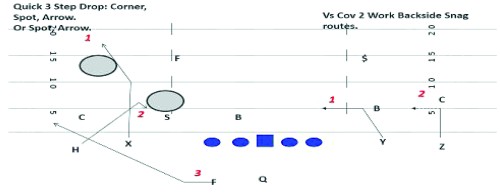
SCAT W/ SNAGS CLIP (Diagrams 3 and 4)
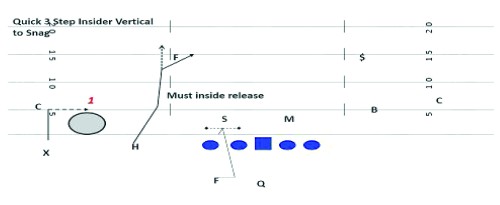
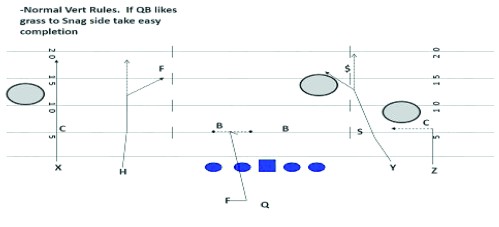
This is a single WR snag tag off the verticals. This allows the coach to tag a WR on a snag route to counter a defense which is “walling” the inside vertical.
“Snag” tag off the Vertical concept:
Snag Off Verts Clip (Diagrams 5 and 6)
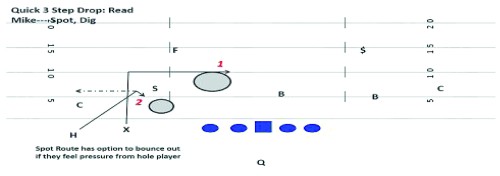
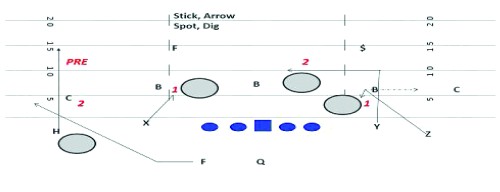
One of the most efficient tags we experienced off the backside of the Air Raid concept is what we called a “Decatur” tag. It is a spot return route by the #1 WR six (6) yards over the #2 WR’s alignment. The #2 WR route is a 10-yard Speed Dig. This gives the QB an option to play off the MLB in a two-high offense working to the three (3) WR side of the offense.
Here is a basic “Stick” concept with a backside “Decatur” tag:
Here is the “Scat” concept with a backside “Decatur” tag (Diagram 7)
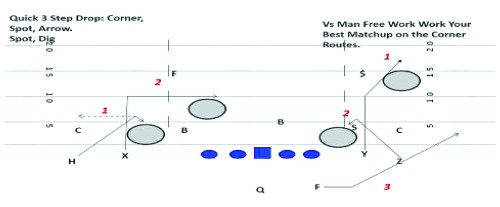
Another tag off the “Scat” concept is to tag a single WR “Cop” route. Cop is short for Corner/Post. This is a good tag against boundary combo coverages in which the safety is getting abnormally wide off of the hash.
“Cop” Tag (Diagrams 8 and 9)
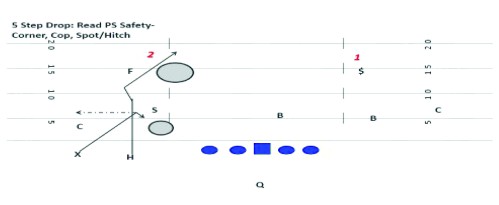
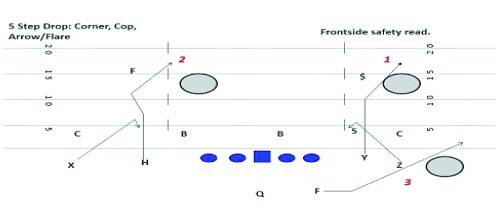
Here is the “Scat” concept with a single WR “Cop” tag to the boundary:
Facing a defense that plays a lot of man coverage or cover 2 man gives some Air Raid concepts issues. The best tag we had to counter this defense was what we called a backside “Odie” tag. This tag puts the #1 WR on a 10-yard speed dig while the #2 WR runs a four step speed out. This tag is also efficient against cover 2 or cover 4.
“Odie” Tag (Diagrams 10 and 11)
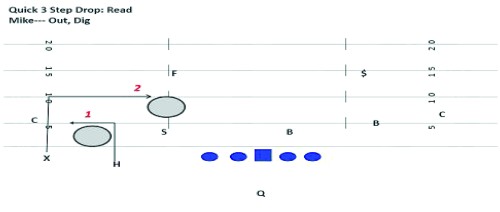
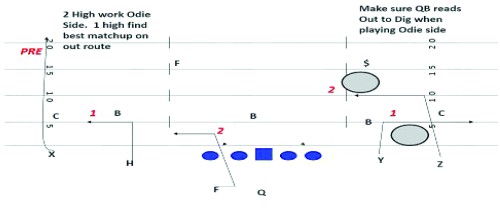
Here is the “Odie” tag off the basic “Quick Out” concept in the Air Raid offense:
Here is the “Odie” tag off of the “Sail” concept (Diagram 12)
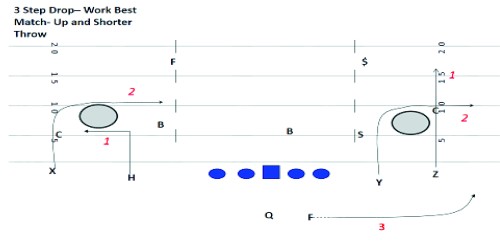
One of the most successful tags we use is putting a traditional “Scat” tag on the front side of the “Y Cross” concept. This allows the QB to get a defined read on the Mike linebacker we were attacking with the Y Cross route. With the #1 WR running a spot route at six (6) yards at the inside hip of the whole player and the #2 WR running a corner route at 10 yards, this allows for the front side whole player to be “captured” by the corner and spot routes. This results in the Y being one on one with the Mike linebacker.
“Scat” tag on the front side of the “Cross” concept (Diagram 13):
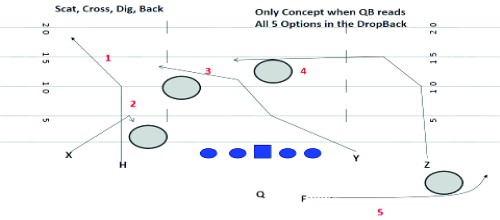
Another tag off of the “Y Cross” concept is to tag a combination of an under route/arrow route with the #2 WR on the play side of the cross concept and an arrow route by the RB. This simply changes the RB to the #2 read in the concept and allows the under route to become a late check down option for the QB after reading the first four (4) reads of the cross concept.
Under Tag off the “Cross” Concept (Diagram 14):
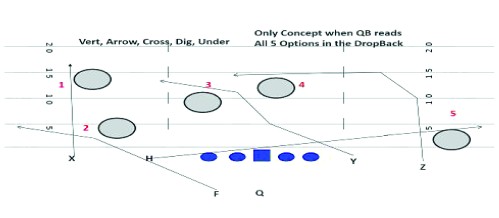
These tags can be used in a variety of ways off of different concepts while using different formations and personnel. The Air Raid passing game is one of the most successful offenses in college football. By adding these backside tags to Air Raid concepts, a coach gives the offense a chance to be successful depending on how the coverage is presented.
About the Author: Nick Coleman was named offensive coordinator of Itawamba Community College in January, 2014. He previously served as offensive coordinator and quarterbacks coach at Faulkner University. In 2010, Coleman was an offensive graduate assistant at Middle Tennessee State University. A quarterback at MTSU (2006-2009) he has both a Bachelor’s Degree and Master’s from there.
